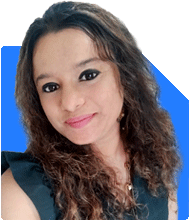I'm already 50 years old. I can invest Rs 5000 per month. What are my options sir
Ans: At 50, you have a relatively shorter time frame to accumulate wealth for your future goals. But with smart planning and disciplined investing, you can still achieve meaningful financial growth. Since you can invest Rs 5,000 per month, let's explore some suitable options tailored to your current life stage and goals.
Assessing Your Investment Needs
Investment Horizon: At 50, your retirement or major financial goals might be around 8-15 years away. This gives you some time to take calculated risks for better returns.
Risk Appetite: Generally, risk tolerance decreases with age. You may prefer a mix of growth and safety, focusing on wealth preservation while generating returns.
Goals: You might be looking to secure your retirement, support your family, or meet other goals such as travel or healthcare. We’ll take these into account.
Let's evaluate some investment options.
Suitable Investment Options
1. Equity Mutual Funds – SIP in Hybrid/Equity-Oriented Funds
Since you're closer to retirement, you need a balance between risk and return. Equity-oriented hybrid funds could be a good option.
These funds allocate a portion to equities (for growth) and debt instruments (for stability).
Over time, hybrid funds can offer better returns than pure debt funds while reducing volatility compared to pure equity funds.
Your Rs 5,000 SIP can be diversified across two or three such funds.
Advantages:
Potential for growth with a cushion against sharp market declines.
The equity portion provides capital appreciation, and the debt portion adds stability.
Example: You could consider hybrid funds that have a good track record in managing both equity and debt, which could provide a balanced return over your investment horizon.
2. Systematic Withdrawal Plan (SWP) from Balanced Advantage Funds
SWPs in Balanced Advantage Funds (BAFs) allow you to invest now and withdraw regularly later for income during retirement.
BAFs dynamically manage equity and debt allocation, helping with both growth and stability.
This is an option to consider if you're planning on creating a passive income stream from your investments once you retire.
Advantages:
Flexibility to withdraw as per your need.
Tax-efficient, as only the gains portion is taxed when you withdraw.
Example: You can start investing Rs 5,000 in a BAF and convert it into an SWP after a few years. It helps create a regular cash flow while keeping some portion invested for growth.
3. Public Provident Fund (PPF) – Safe and Tax-Free
PPF is one of the safest and most tax-efficient investments available. Even though it has a lock-in period of 15 years, partial withdrawals are allowed after 7 years, and you can extend it in blocks of 5 years.
The interest earned is tax-free, and it offers stable returns, which are guaranteed by the government.
If you are looking for safety and stability, you could allocate a portion of your Rs 5,000 to PPF.
Advantages:
Risk-free, government-backed investment.
Suitable for conservative investors who prioritize safety.
Example: If you invest Rs 2,000 per month in PPF and the rest in mutual funds, you'll have both a safe and a growth-oriented portfolio.
4. National Pension System (NPS) – For Retirement Planning
NPS is a government-sponsored retirement savings plan that invests in equities, corporate bonds, and government securities.
At 50, you can invest up to the age of 60, and after that, you can withdraw 60% of the corpus tax-free. The remaining 40% is used to buy an annuity to provide a regular income post-retirement.
The equity exposure (up to 75%) allows for potential growth, while the debt portion adds stability.
Advantages:
Tax benefits under Section 80C (Rs 1.5 lakh limit) and Section 80CCD(1B) (additional Rs 50,000).
A mix of growth (equity) and stability (debt).
Example: You can start with Rs 1,000 or more into NPS, giving you retirement income with the added benefit of tax savings.
5. Debt Mutual Funds – Stability and Safety
If you want to avoid the volatility of the equity market altogether, you can opt for debt mutual funds. These funds invest in bonds, government securities, and other fixed-income instruments, offering a safer but lower return than equity.
Debt mutual funds have better liquidity and tax efficiency than traditional fixed deposits.
Advantages:
Lower risk compared to equity.
Offers better tax treatment for long-term capital gains compared to fixed deposits.
Example: A portion of your Rs 5,000 can go into debt mutual funds to ensure some safety for your capital while generating moderate returns.
Balancing Your Portfolio
Since you’re 50, you should have a balanced portfolio with both growth and safety in mind. A good mix could be:
Equity mutual funds or hybrid funds (60% of your Rs 5,000) for growth potential.
Debt mutual funds or PPF (20% of your Rs 5,000) for stability.
Gold or NPS (20% of your Rs 5,000) for diversification and retirement benefits.
This allocation can help you balance risk and returns while aiming for a secure retirement.
Final Insights
At 50, with an investment of Rs 5,000 per month, you can still accumulate significant wealth by making smart investment choices. A mix of equity, debt, and gold can provide growth while managing risks. It’s important to review your portfolio periodically and adjust as needed. Consider consulting a Certified Financial Planner for personalized advice, especially as you approach retirement.
Keep in mind that financial discipline, consistent investing, and incremental increases to your monthly contributions are key to achieving your financial goals.
Best Regards,
K. Ramalingam, MBA, CFP,
Chief Financial Planner,
www.holisticinvestment.in
https://www.youtube.com/@HolisticInvestment




























